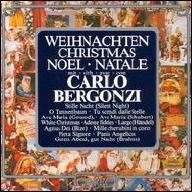Carlo Bergonzi
from Vidalenzo, Polisene Parmense, Italy
July 13, 1924 - July 25, 2014 (age 90)
Biography
Tenor Carlo Bergonzi, for many, epitomized Verdian grace and style, not only for his generation, but for the entire 20th century. His parents were great opera lovers and took him to see Il trovatore when he was just six. The next morning, they found him singing "Di quella pira" and staging the scene with kitchen implements. He performed in church choirs and in child roles in the Busseto Opera. At 14, he auditioned for Edmondo Grandini, who decided that Bergonzi was a baritone and offered him lessons. Bergonzi moved to Brescia to study with him, though his studies were interrupted by the war and later by his imprisonment for anti-Nazi activities in a German prisoner-of-war camp. When the war ended, he began studies at the Boito Conservatory in Parma. There, still considered a baritone, he studied with Ettore Campogalliani. After graduation, he made his professional debut as Schaunard in La bohème in 1947, his debut in a lead as Rossini's Figaro in 1948 at Lecce, where he continued to sing leading baritone roles. However, he remained convinced that he was a tenor. Finally, using what he had learned at the conservatory, recordings of other tenors, and what he remembered from singing on stage with Schipa and Gigli, he made his debut as a tenor at Bari as Andrea Chenier in 1951 and soon sang two major Verdi tenor roles: Riccardo (Un ballo in maschera) and Alvaro in La forza del destino. To keep his voice flexible, he also sang lighter roles, such as Nemorino and even Nero in Monteverdi's L'incoronazione di Poppea. In 1953 he made his La Scala debut creating the role of Mas'Aniello in Napoli's opera and his London debut as Alvaro. His American debut at the Lyric Opera of Chicago was in 1955, and his Met debut the following year. His Covent Garden debut, again as Alvaro, was not until 1962. He became a regular performer at nearly all of the great opera houses, renowned not only for his singing, but for consistency. He kept his versatility throughout his career, alternating lyric and spinto roles and even some verismo roles. He was never a great stage actor, nor did he have the matinee-idol looks, but was an excellent vocal actor, singing each role with the colors he felt it demanded, rather than a "one voice fits all" approach. During the 1980s he began to focus more on recitals and concert performances and became a well-known teacher, concentrating on technique.
He recorded all of his major Verdi roles. He often referred to his 1976 recording on Philips of 31 major arias from every Verdi opera, which won the Deutscher Schalplattenpries, Premio della critica discographica italiana, and the Stereo Review Record of the Year awards, as the recording of which he was proudest. His complete recording of Pagliacci on Deutsche Grammophon for von Karajan shows him thoroughly at home in the verismo style. On Sony, he made an exemplary recording of Italian songs. ~ Anne Feeney, Rovi
Top Tracks
Albums
Videos
Close


















